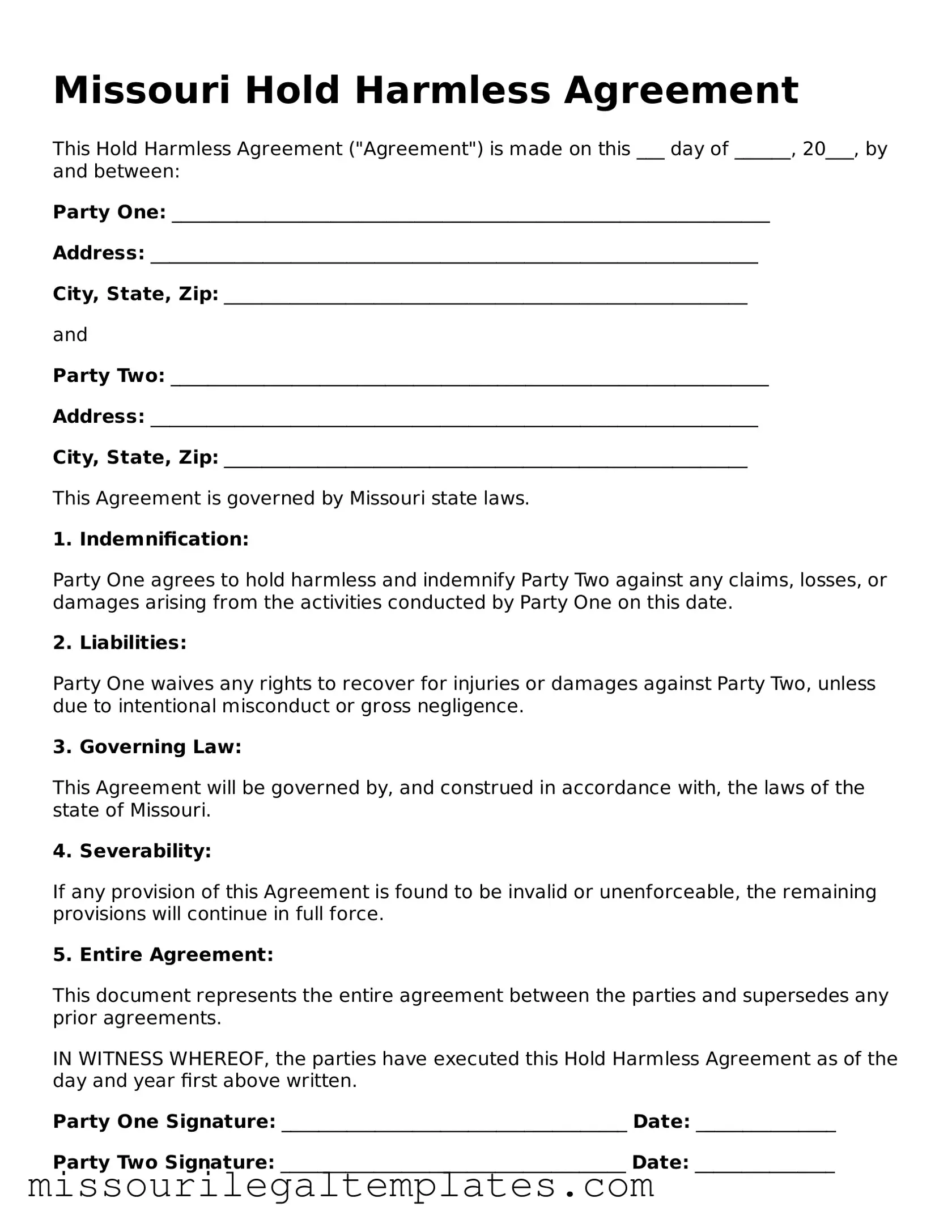Missouri Hold Harmless Agreement
This Hold Harmless Agreement ("Agreement") is made on this ___ day of ______, 20___, by and between:
Party One: ________________________________________________________________
Address: _________________________________________________________________
City, State, Zip: ________________________________________________________
and
Party Two: ________________________________________________________________
Address: _________________________________________________________________
City, State, Zip: ________________________________________________________
This Agreement is governed by Missouri state laws.
1. Indemnification:
Party One agrees to hold harmless and indemnify Party Two against any claims, losses, or damages arising from the activities conducted by Party One on this date.
2. Liabilities:
Party One waives any rights to recover for injuries or damages against Party Two, unless due to intentional misconduct or gross negligence.
3. Governing Law:
This Agreement will be governed by, and construed in accordance with, the laws of the state of Missouri.
4. Severability:
If any provision of this Agreement is found to be invalid or unenforceable, the remaining provisions will continue in full force.
5. Entire Agreement:
This document represents the entire agreement between the parties and supersedes any prior agreements.
IN WITNESS WHEREOF, the parties have executed this Hold Harmless Agreement as of the day and year first above written.
Party One Signature: _____________________________________ Date: _______________
Party Two Signature: _____________________________________ Date: _______________
